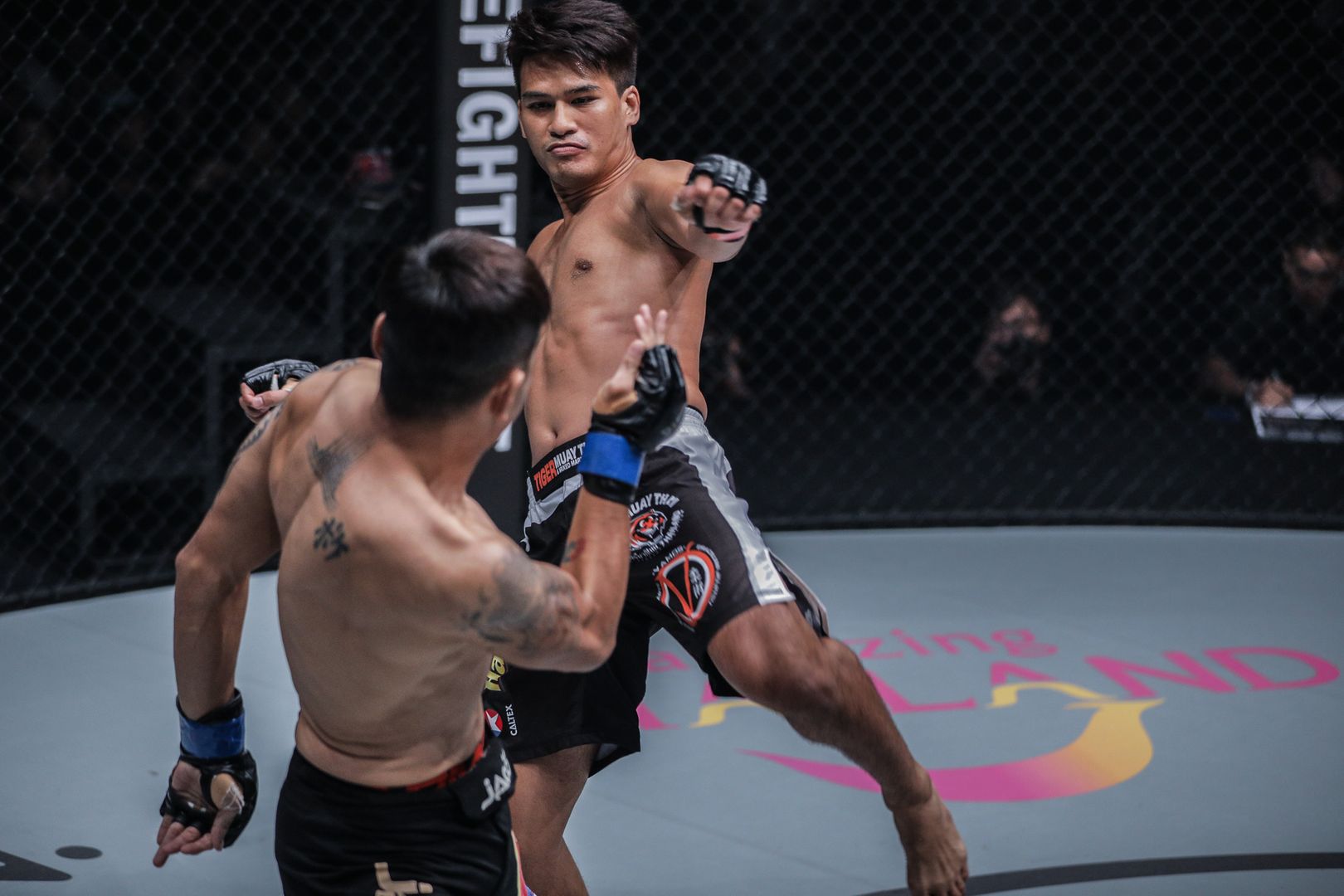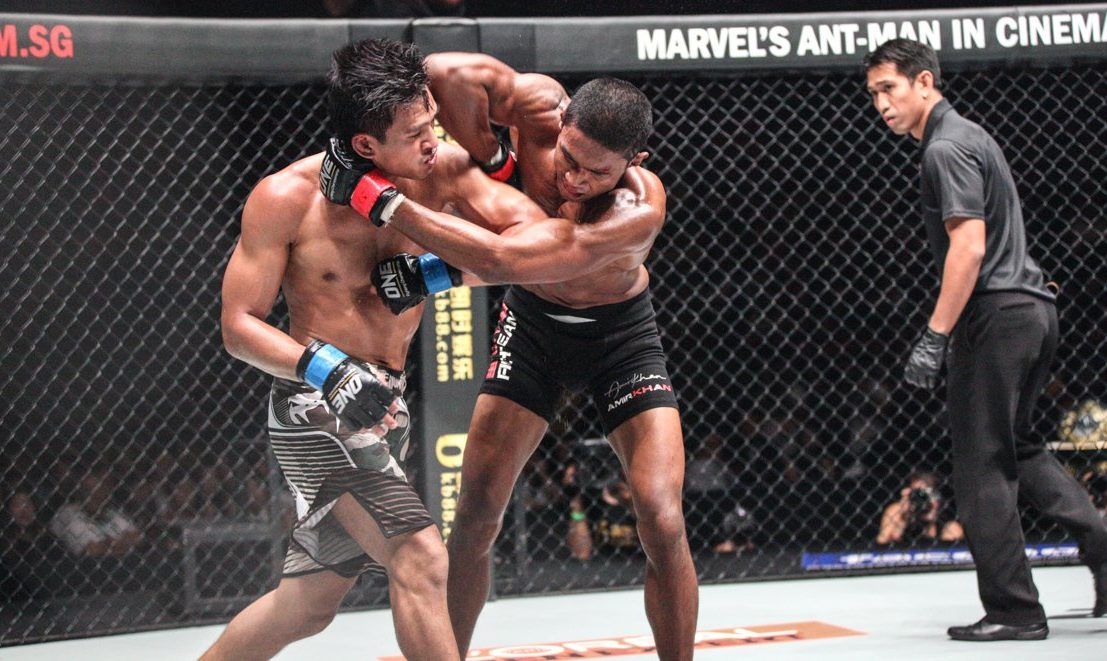Improve Your Striking With Shannon Wiratchai’s OneShin System

A thrilling game of 🐱 and 🐭.Macao | 5 August | TV: Check local listings for global broadcast | PPV: Official livestream at oneppv.com | Tickets: http://bit.ly/oneconquerors17
Posted by ONE Championship on Tuesday, July 25, 2017
ONE Championship lightweight Shannon “OneShin” Wiratchai has a wealth of martial arts experience across many different styles, adopting Bruce Lee’s mindset of absorbing what is useful from each, and implementing them into mixed martial arts.
Starting in judo and kung fu before progressing to BJJ, Muay Thai, wrestling, and boxing, Wiratchai has drawn from all these disciplines, all while using his own analysis to refine these techniques for combat.

This catalogue of knowledge is something the Thai athlete calls the ‘OneShin Striking System.’ Its effectiveness is shown in the results Wiratchai has posted in his professional career, going 7-1 (1 NC) to date, and garnering five finishes.
”Actually, I just wanted to make it sound cool for martial arts fans in Thailand,” the 28-year-old jokes. “What is included in the system are just the basics of the striking disciplines I have learned. There is a overarching principle I call ‘R.A.R.E’ that will make your striking game much better.”
While the Bangkok native currently prepares for his lightweight showdown with Rob Lisita at ONE: KINGS & CONQUERORS in Macao, he takes a break from training to share his knowledge.
Balance

A core principle in any sport or physical activity, balance and the full control over your base and posture should be fundamental when practicing any striking art. Wiratchai stresses that this should be the foundation you build the rest of your development from.
“If you are looking to throw shots, make sure you can control your body. It does not matter if your punch is long or short, wide or narrow, straight or bent. As long as you have balance, then the first ‘R’ will help you,” he says.
“But if you are throwing a punch and your feet are not on the ground, or you cannot bring your head back to a neutral position, then you have to hope that your shot will land in the right place or you will end up in a bad position.”
Range

The first letter in Wiratchai’s R.A.R.E principle stands for ‘Range.’ Range refers to the distance of engagement. In mixed martial arts, every range is vital. For striking, it mostly centers on being in or out of potential striking distance.
“If you have mastered the work of range and distance — you know how to go in and out while controlling your balance — then even if you have bad punching basics, you can still hit your opponent and come out without getting hit,” he says. “Footwork drills are important for developing this.”
Angle

After the most basic of linear movements — forward and backwards — comes ‘A’ for ‘Angle.’ Often, simply entering and exiting a striking range is not enough if your opponent is capable of doing the same thing. That is when you have to add more elements of movement to your arsenal.
“Quite often, you can stay in front of your opponent, playing in-and-out games all day, and nobody gets hit. Especially if your opponent has good speed and reflexes to move out of range and evade your punch or kick. That happens a lot in Karate matches,” he explains.
“That is when angles become the game changer. Sometimes you have to create the angles yourself — stepping aside, pivoting to see your opponent’s tendencies, and then starting to play your ‘Range’ game to attack again.
“Also, many times when you start your ‘Range’ game by stepping in to attack – whether it causes damage or not – if your opponent starts to turn away or change their stance, they have created an angle for you already.”
Rhythm

In all striking martial arts from every corner of the globe and for every goal, be it self-defense or sport, there will always only be a certain amount of techniques available to use. The basic strikes are punches, kicks, knees and elbows, but the variety of ways to manipulate this relatively small number of strikes means the end results are near-infinite.
“When you have found a position to attack, or you know where to be, then you can throw more than just a single shot. You can start throwing combinations,” Wiratchai explains. “Basic combinations are string together your shots such as ‘cross-hook-cross’ or ‘uppercut-hook-cross-low kick. But you can make your combination more unique by using another ‘R,’ ‘Rhythm.’”
As the Thai suggests, turn it into music. “You can have the same song with the same notes, but if you change the rhythm, the song will be very different, or can even turn into another song,” he says.
“Striking is the same.You may use a familiar combination, but if you play around with the dynamics of fast and slow, real or fake, while using movement to create ‘Range’ and ‘Angle’, then you can create as many combinations as musicians can make songs, using the same notes in many different ways.”
Execution

Many people may see what is effectively the end goal as the start point — learning to punch or kick without any knowledge of body mechanics or positioning. Following Wiratchai’s steps, using the ‘E’ for ‘Execution’ is the result of having the fundamentals already in place.
“There is no technique in this one, but when you have got ‘R.A.R.,’ then you should be controlling the game, and then you can execute your shot or your technique,” he says.
“The principle behind the execution is what I learned from Chinese internal martial arts, and clearly understood when I started learning Muay Thai. Surprisingly, these two martial arts share the same principle.”
That principle can be broken down into three simple Chinese words, those being ‘Hua,’ which means neutralization, ‘Na,’ which is for controlling your opponent, and finally ‘Da’ for throwing strikes.
“When we see the strikes, we neutralize them, then when we see the target, we execute the technique. Between defense and attack, we often forget to stabilize the situation first by fully controlling your opponent, ensuring that there won’t be any surprises coming your way,” the Thai continues. “So always make sure that you have full control before executing your technique.”



















